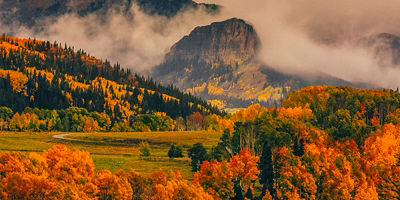
Created to move cargo across New York from the Hudson River to Lake Erie, the Erie Canal made history by connecting the Atlantic to the Upper Midwest and beyond via the Great Lakes. While mules did the work pulling barges 15 miles at a time, nowadays the storied canal (and the entire Erie Canalway National Heritage Corridor around it) has a much different reputation as an outdoor adventure hub, though one that you can still move through at a relaxed pace. Some visitors are drawn to the area’s notable food and drink scene, including wine country, others to historical sites like the George Eastman House or Women’s Rights National Historical Park, or natural highlights like the Finger Lakes. Whether it’s a love of history, tranquil waters, or adventure, locals and travelers alike come here to bike, walk, paddle, and fish in the unique waterway that cuts through towns and cities across upstate New York.
Ready to see for yourself? Here’s what to know, and what to do when you get here.
History
Construction on the 363-mile canal across New York started in 1817. At the time, it was an engineering miracle that took workers more than eight years, using little more than human and animal power to dig the 4-foot-deep, 40-foot-wide canal through forests, across rivers on aqueducts, and up and down hills using more than 80 locks. When it finally opened in 1825, it connected not only Albany to Buffalo, but also merchants, farmers, loggers and more to the lands of the expanding American West and Midwest. Today, the waterway still connects the two cities, stretching across the state, though after expansion and rerouting in 1918, it now includes sections of lakes and the Mohawk River. The Erie Canal, its connecting canals, and some nearby land was folded into the National Park Service as the Erie Canalway National Heritage Corridor in 2000.
Wildlife
The canal and surrounding areas are popular places for wildlife-spotting. Bird-watchers will likely see mallards, wood ducks, common mergansers, great blue herons, tree swallows, and even bald eagles. For fans of terrestrial creatures, the shorelines host white-tailed deer, mink, rabbits, foxes, and snapping turtles in ecosystems that include hardwood forests, wetlands, and floodplain forests.
Recreating in the Erie Canalway National Heritage Corridor
No matter what your favorite outdoor activity is, you can likely do it near the canal.
Paddling
What To Know: The Erie Canal’s calm water is ideal for paddling a kayak or canoe, and many sections, especially in the western parts of the state, have no-wake speed limits that make the water easily navigable even with other boat traffic. The canalway has 140 paddling access points across its length, making it easy to paddle out for a day-trip or section trip, or to paddle the entire length on a multi-day trip (no paddling permits necessary). There are designated campgrounds along the route, and many towns offer canalside facilities like potable water and bathrooms.
The canal has 35 locks that raise and lower boats as the surrounding topography changes, and paddlers can pass through them for free. It’s best, but not required, to call ahead (find the specific lock’s number from these online resources) to give the lock keeper time to prepare for your arrival by raising or lowering the water.
Where To Go: For a pleasant day-trip, launch your kayak or canoe from the Port of Fairport, in the center of the Village of Fairport, N.Y. Paddle west to Bushnell’s Basin. Take out at the docks, stopping at Abbott’s for a frozen custard or Seven Story Brewing for a canalside beer. Paddle back to Fairport for a round-trip just over 7.5 miles.






















